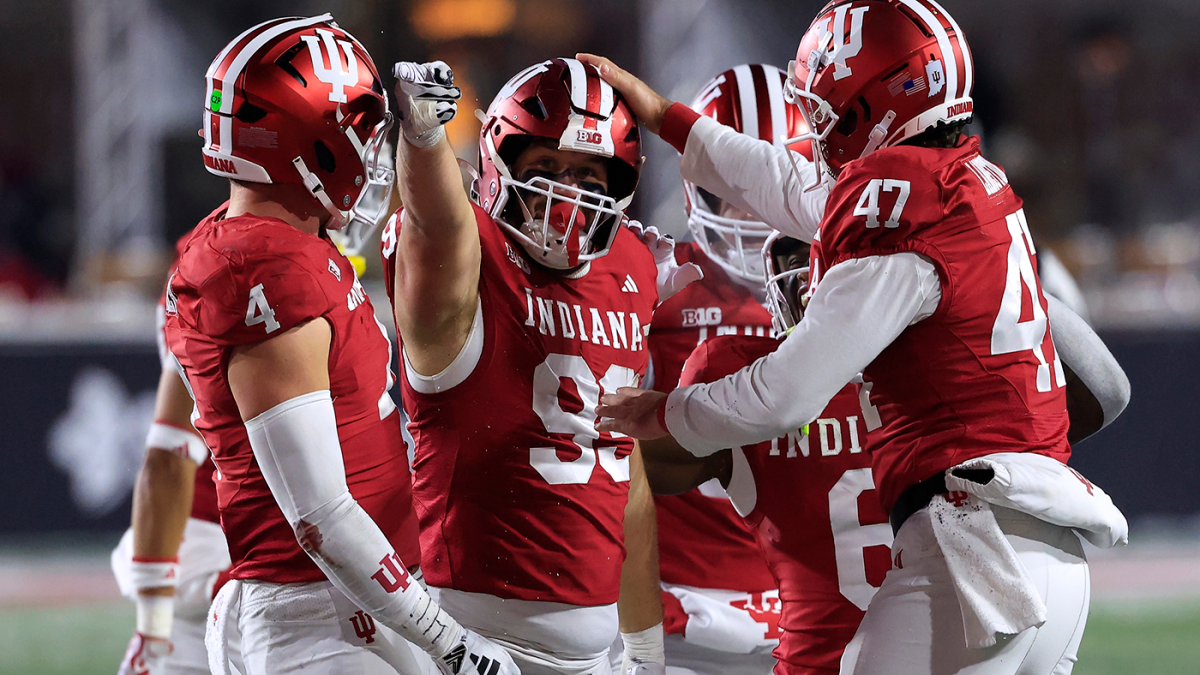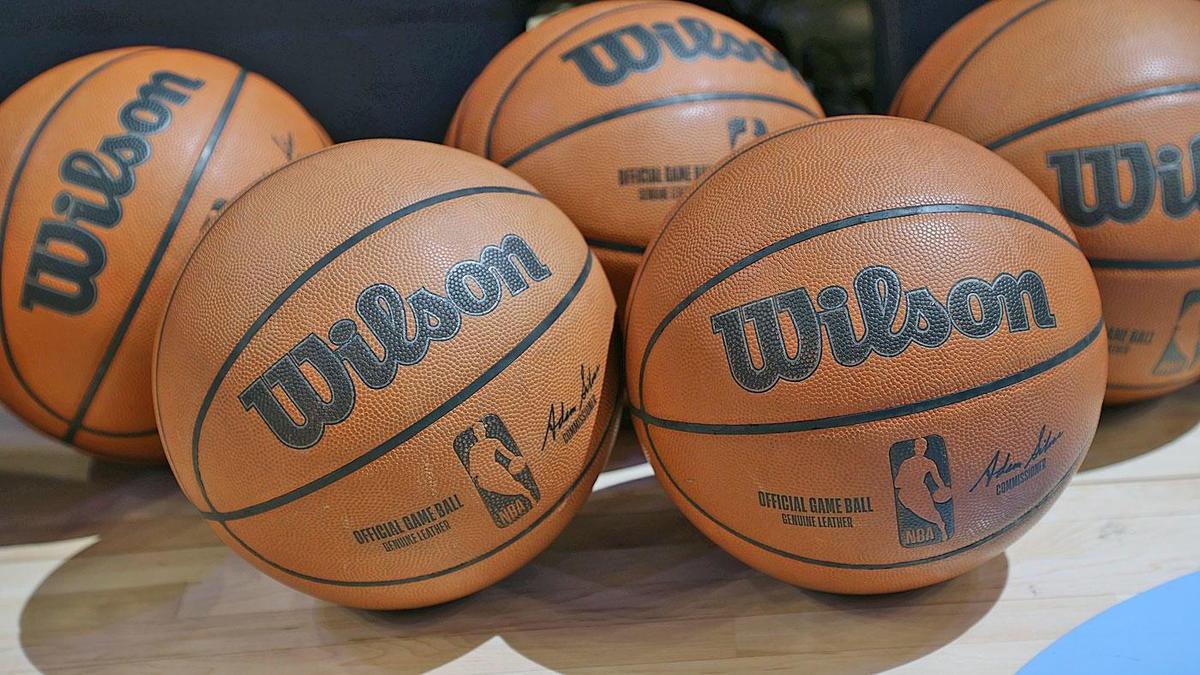The beauty of a postseason tournament is that anyone can win — at least in theory. The College Football Playoff embarks into its first year with an expanded, 12-team format this week following one of the more chaotic regular seasons in recent memory. The question now is whether that chaos will trickle into the postseason.
The lowest-rated team in the CFP has won only twice — No. 4 Ohio State (2015) and No. 4 Alabama (2018) 00 but the No. 1 team has only four titles in the 10-year era of the four-team CFP, including three of the last four. Parity, however, has grabbed hold of the sport as the transfer portal and NIL money has helped spread talent more evenly across the country.
Now, with on-campus games in the first round for the first time in FBS history and the top four seeds (conference champions) sitting at home on a bye, the new-look CFP wipes the slate clean of expectations. The season starts anew Friday night with No. 10 Indiana at No. 7 Notre Dame.
The 2024-25 iteration of the playoff features the nation’s four best defenses and four of the top six offenses. It’s legitimately the best of the best with only some questioning whether ACC runner-up SMU deserved a spot over Alabama in the field, and three-loss Clemson jumping the pecking order from No. 16 to No. 12 thanks to an ACC title.
Who can win? Well, everyone has a shot. Let’s examines how and why each of the 12 participants can advance to Atlanta and win the national title on Jan. 20, 2025.
(1) Oregon: Perfectly balanced like a champion
Oregon has the most complete team in the field, and with one of the most experienced quarterbacks (Dillon Gabriel) to ever play the sport, the Ducks have the talent and a battle-tested roster to win it all.
One could argue Oregon also improved as the season developed, going from a questionable top-five team with close wins against FCS Idaho and Boise State to knocking off Big Ten favorite Ohio State and winning eight games by 21 points or more. More importantly, Oregon is balanced and has the makeup of previous championship teams in the CFP era: an explosive offense (No. 1 in Big Ten), a dominant offensive line (only five sacks allowed in last 11 games) and a defense that thrives in the trenches (No. 11 in sacks per game).
The problem is the Ducks’ draw. Even as the No. 1 seed, Oregon likely faces the toughest path to the championship with a potential rematch against Ohio State in the quarterfinals and a showdown with SEC runner-up Texas in the semifinals.
(2) Georgia: Big-game experience
No coaching staff or team has faced more championship-like environments in recent years than Georgia. The Bulldogs return for their fourth CFP appearance under Kirby Smart, who leads them on a seven-bowl winning streak and victories in four straight CFP games. The SEC champs battled adversity to win their last two games in overtime, including against Texas in the SEC title game, and managed to do so with starting quarterback Carson Beck sitting out the second half with an elbow injury. A timetable for his return is unknown, but it’s clear the Bulldogs are equipped to win without him after Gunner Stockton led them to three scoring drives in the SEC title game.
Georgia owns three wins this season against teams in the CFP — Texas (2x) and Tennessee — and has never lost to Notre Dame and Indiana, one of which the Bulldogs will face in the quarterfinals.
(3) Boise State: CFP’s best player
Boise State has the best player in the CFP on their roster and a puncher’s chance against the field with a first-round bye. Ashton Jeanty has rushed for 2,497 yards and is only 132 yards short of breaking Barry Sanders‘ single-season rushing record. The Heisman Trophy runner-up has rushed for 200 yards in six games, and nearly led the Broncos’ to an upset of Oregon on the road in Week 2. He rushed for 192 yards and three touchdowns while averaging 7.7 yards per carry in the 37-34 loss to the Ducks, who are No. 1 in the CFP field.
The draw is relatively solid with a potential showdown against Penn State and its strong rushing attack on the docket in the quarterfinals. Georgia has a similar rush defense as Oregon (No. 36 vs. No. 35 nationally) and could await the Broncos in the semifinals, so it’s not like Jeanty should be overmatched.
(4) Arizona State: Hottest team with nothing to lose
Arizona State has been playing with house money for most of the season. The Sun Devils won the Big 12 title despite being picked to finish last in the 16-team conference and did so by blowing out Iowa State 45-19 without their top receiver. Second-year coach Kenny Dillingham has Arizona State on a six-game winning streak, and playing with immense confidence thanks to his aggressive style, which has included fourth-down conversions in negative territory and tremendous play designs.
The engine is running back Cam Skattebo, who has already tied two school records and has recorded 150-plus yards in three straight games. He’s the closest comparison that can be made to Boise State’s Ashton Jeanty, and when you see the two bull through linebackers and shed tacklers, you’ll understand why.
(5) Texas: Well-adjusted contender
Texas doesn’t own a single top-25 win this season, but the Longhorns have been tested in multiple big games in the SEC. The 22-19 overtime loss to Georgia in the SEC title game may have been disappointing, but the Longhorns showed noticeable improvement since losing 30-15 at home to the Bulldogs earlier in the season.
The focus has been on the Longhorns’ star power at quarterback — and whether Quinn Ewers should be replaced by Arch Manning — but the defense has carried the team. It’s the program’s best in 40 years, allowing only 12.5 points per game, the best mark since 1983. Even if he is still slowed by an abdominal strain, Ewers has managed to throw a touchdown in 24 straight games, the longest active streak in the FBS.
Texas is 5-1 against the spread as a double-digit favorite and enters the first round as a 10.5-point favorite against Clemson, which is 0-5 against top-five teams on the road. Plus, Texas has a favorable matchup with Arizona State in the quarterfinals.
(6) Penn State: Favorable draw, matchups
Is it possible the No. 6 seed in the bracket has the most favorable draw? It certainly appears so with SMU sneaking into the field and a potential quarterfinals matchup against Boise State on the docket.
Even in defeat, Penn State proved itself worthy of a top-five ranking in a 45-37 loss against unquestioned No. 1 Oregon in the Big Ten Championship. Quarterback Drew Allar was stellar until a late interception sealed the loss for the Nittany Lions, and Kaytron Allen and Nick Singleton both eclipsed 100 yards rushing. Should Penn State beat SMU, next up will be Boise State and then potentially Georgia in the semifinals. Not bad for being seeded surely in the middle of the field.
(7) Notre Dame: Thriving under the radar
How much did you hear about Notre Dame during the last two months of the season? Not much, we bet. The Fighting Irish dropped low on the national radar after the loss to Northern Illinois in Week 2 and has thrived, beating teams by an average of 26.3 points while winning six straight games. They own the nation’s third-best defense and offense and can play ball-control against the best. Quarterback Riley Leonard has tied the school record for rushing touchdowns by a quarterback (14).
Of all the teams in the playoff, Notre Dame is the most opportunistic. The Irish own the nation’s second-best turnover margin (plus-16), and turnovers will be key in a tournament format.
(8) Ohio State: Roster built to win championships
Ohio State still has the best roster money can buy. The question is whether Ryan Day can live up to his high-paying contract and finally win a big game. He’s 1-3 in the CFP and a dreadful 3-6 against the top five. Coming off a loss to unranked Michigan, the program’s fourth straight in the rivalry, fans are looking for anything to criticize Day.
History, however, is on the Buckeyes’ side. The program hasn’t lost back-to-back games at home since 1990 and the Buckeyes will arguably have the best home-field advantage at night inside Ohio Stadium, which had never hosted a December football game until now.
The roster is stacked, and even with quarterback Will Howard not quite living up to expectations, simply adjusting and throwing the ball more often to freshman phenom Jeremiah Smith would alleviate a lot of the pain. A rematch against Oregon would await the Buckeyes in the quarterfinals, so there would be no shortage of motivation after the 32-31 road loss earlier this season.
(9) Tennessee: Explosive when needed
Tennessee’s offense is capable of exploding at any moment, even if it has struggled to do so against equally matched opponents. The Volunteers averaged an insane 61.8 points against four nonconference teams but only 25 in the SEC. There are signs of improvement, however. Quarterback Nico Iamaleava has thrown eight touchdowns against only one interception in the last two games, and the 17-point outburst in the first half on the road against Georgia was a great sign.
The first-round matchup might actually be the toughest in the bracket. Ohio State owns a balanced offense and defense and hasn’t allowed a passing touchdown since mid-October against Oregon. The key for the Vols’ postseason run is running back Dylan Sampson, who owns the program’s best single-season rushing record (1,485), and their top-five defense.
(10) Indiana: Score-happy underdog
Indiana has been the underdog story of the season, and though its schedule was weak, the Hoosiers own the nation’s best scoring margin (28.7 points) and have put up a lot of points with quarterback Kurtis Rourke.
There’s always pressure in the playoff, but the Hoosiers have to be feeling loose heading into an in-state showdown with Notre Dame, the shortest road trip for a CFP team.
“To me and our guys, in my mind, it’s just another game,” first-year Hoosiers coach Curt Cignetti said.
Indiana leads the nation in pass efficiency (179.1) and is second in scoring (43.3 ppg). The defense is second nationally in total defense (244.8 ypg). That didn’t matter much on the road at Ohio State, where the Hoosiers gifted 14 points on special teams, and the matchup/atmosphere figures to be similar Friday night at Notre Dame.
(11) SMU: Capable in the trenches
SMU had only 10 months to build a contender in the ACC after accepting an invitation to join the conference, so it opted to focus on securing 13 offensive and defensive linemen from the transfer portal with playing experience on power conference teams. The results: the Mustangs rank fourth nationally in rush defense (93.4), second only to Indiana among teams in the playoff.
Big-game winners usually have two things in common: a solid defense in the trenches and an explosive offense. The Mustangs have both, ranking sixth nationally in scoring (38.5), and the defense ranks in the top 12 in sacks and tackles for loss. Quarterback Kevin Jennings is dynamic as a passer and runner and nearly led the Mustangs back from a double-digit deficit in the ACC Championship Game.
(12) Clemson: A championship coach
Dabo Swinney has the most experience in the playoff with seven appearances, including six straight from 2015-20, and somehow managed to pull Clemson out of three losses, including two at home, and into the CFP with an impressive win against SMU in the ACC Championship Game.
Clemson might have long odds to reach the national championship, but don’t sell a two-time national champion short.
“After those losses, to recognize that everything’s still in front of you, that’s easier said than done, but coach Swinney has certainly been there,” Clemson athletics director Graham Neff told CBS Sports. “You have confidence that he can lead the guys.”
Clemson enters the first round as a 10.5-point underdog at Texas. A double-digit underdog has never won in the CFP (0-8).
















